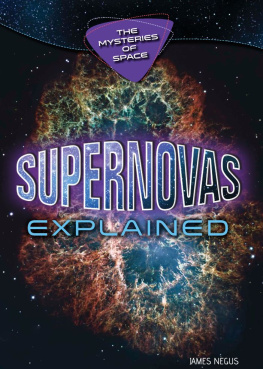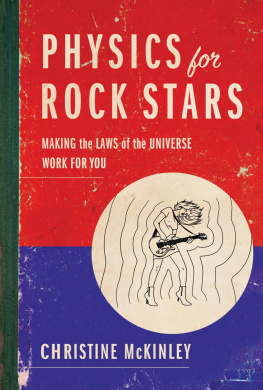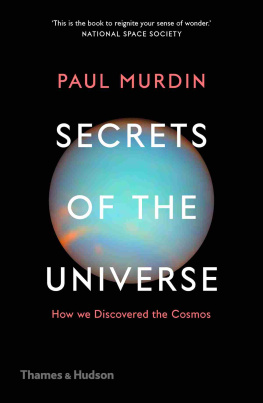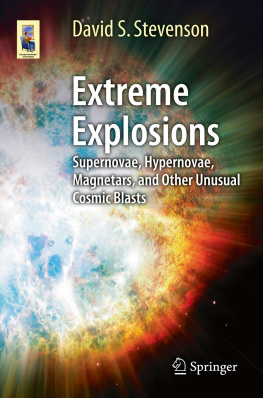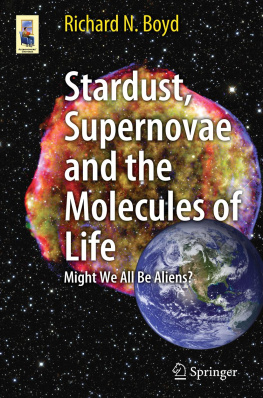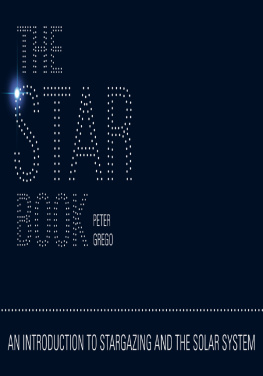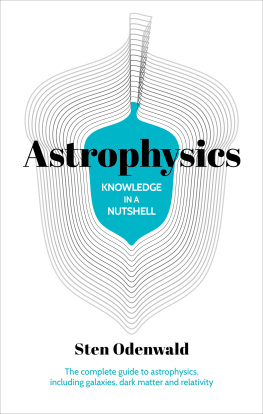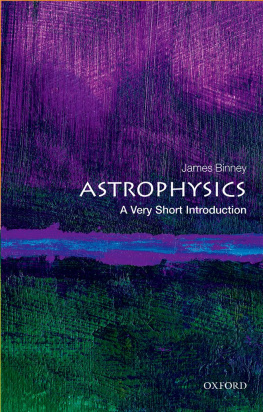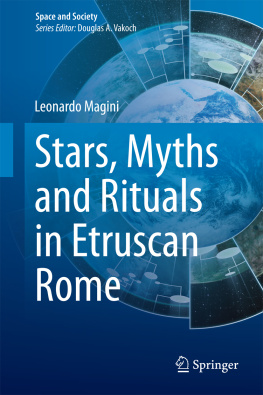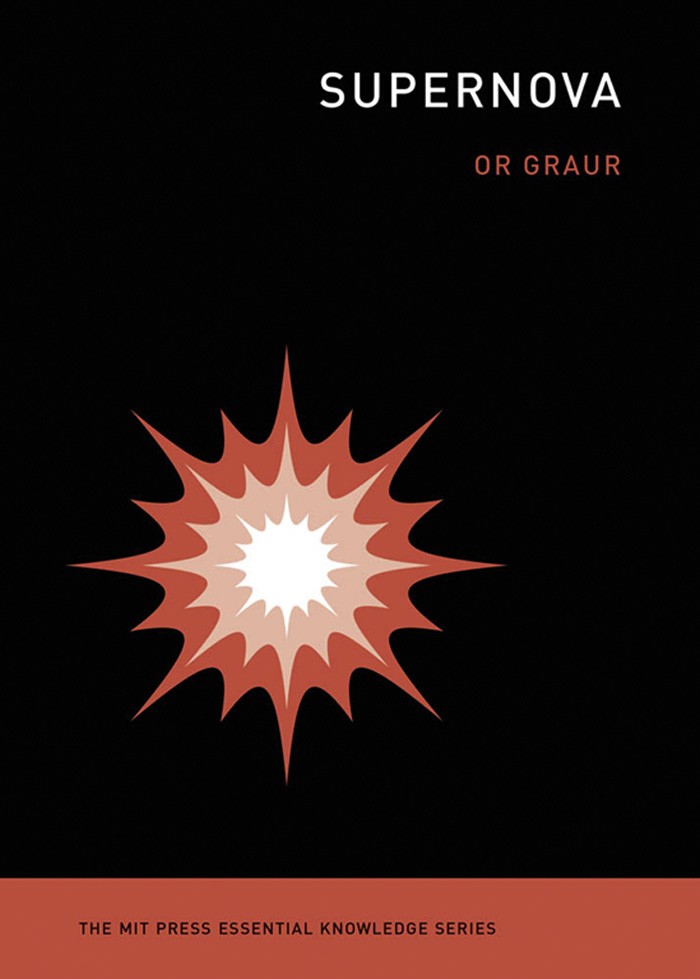
Supernova
The MIT Press Essential Knowledge Series
A complete list of the titles in this series appears at the back of this book.
Supernova
Or Graur
The MIT Press | Cambridge, Massachusetts | London, England
2022 Massachusetts Institute of Technology
All rights reserved. No part of this book may be reproduced in any form by any electronic or mechanical means (including photocopying, recording, or information storage and retrieval) without permission in writing from the publisher.
The MIT Press would like to thank the anonymous peer reviewers who provided comments on drafts of this book. The generous work of academic experts is essential for establishing the authority and quality of our publications. We acknowledge with gratitude the contributions of these otherwise uncredited readers.
This book was set in Chaparral Pro by New Best-set Typesetters Ltd.
Library of Congress Cataloging-in-Publication Data
Names: Graur, Or, author.
Title: Supernova / Or Graur.
Other titles: MIT Press essential knowledge series.
Description: Cambridge, Massachusetts : The MIT Press, [2022] | Series: MIT Press essential knowledge series | Includes bibliographical references and index.
Identifiers: LCCN 2021000487 | ISBN 9780262543149 (paperback)
Subjects: LCSH: Supernovae.
Classification: LCC QB843.S95 G738 2022 | DDC 523.8/4465dc23
LC record available at https://lccn.loc.gov/2021000487
10 9 8 7 6 5 4 3 2 1
d_r0
Dedicated to BUF19Sop (SN Sophia) and BUF19Awd (SN Awdrey).
Contents
Series Foreword
The MIT Press Essential Knowledge series offers accessible, concise, beautifully produced pocket-size books on topics of current interest. Written by leading thinkers, the books in this series deliver expert overviews of subjects that range from the cultural and the historical to the scientific and the technical.
In todays era of instant information gratification, we have ready access to opinions, rationalizations, and superficial descriptions. Much harder to come by is the foundational knowledge that informs a principled understanding of the world. Essential Knowledge books fill that need. Synthesizing specialized subject matter for nonspecialists and engaging critical topics through fundamentals, each of these compact volumes offers readers a point of access to complex ideas.
Introduction
Ive never seen a supernova blow up, but if its anything like my old Chevy Nova, itll light up the sky!
Philip J. Fry
Sunlight streams through the tall glass windows of the Daily Planet offices where mild-mannered reporter Clark Kent, about to be fired by his editor, leaps out. Sapped of his superhuman strength, the man of steel plummets through the air. Seconds later, he is saved by a mysterious new superhero that has shown up in Metropolis, a masked hero called Supernova! Who is the hero behind the mask? Who is this Supernova, whose radiance momentarily outshines the Sun?
Meanwhile, in a small gallery in London, Sherlock Holmes frantically pores over the canvas of a lost Vermeer painting. He has ten seconds to prove the painting is a fake; the life of a young boy, explosives strapped to his body, hangs in the balance. At the very last moment, Sherlock cries: The Van Buren Supernova! A huge star blowing up. Only appeared in the sky in 1858! As Inspector Lestrade looks dumbfounded at the amateur detective, Dr. John Watson peers at one of the small white blobs in the painted night sky and explains, So how could it have been painted in the 1640s?
Halfway across the Galaxy, the crew of the USS Voyager witnesses a supernova explosion. The next day, two more supernovae go off in Voyagers vicinity. On the bridge, Captain Kathryn Janeway turns to face Q, a seemingly omnipotent alien being who has appeared on her ship, and accuses him: A star going supernova is an event that occurs once every century in this galaxy. Now were about to witness our third in less than three days, all in the same sector. Why do I suspect you have something to do with this? Captain Janeway, a trained scientist, is right. Even though the average frequency of supernova explosions in the Milky Way Galaxy is 24 supernovae per century, it is extremely unlikely for three of them to occur one after the other in the same small patch of space. The captains day is about to get worse when she learns that the supernovae now buffeting her ship are caused by a brutal civil war raging in the Q Continuum.
Fourteen years later, without any apparent intervention from Q, the star at the center of the Romulan star system explodes in what becomes known as the Romulan Supernova. It obliterates the Romulan home world of Romulus, kills tens of millions of Romulans, and launches a series of events that will see the destruction of Vulcan, the burning of Mars, and the resignation from Starfleet of a disillusioned Admiral Jean-Luc Picard.
Based loosely on actual or purely imaginary astrophysical phenomena, these works of fiction allude to some of the most pressing questions facing astrophysicists today: What are supernovae? How can we use them to further our understanding of physics? And what effects do they have on the Universe and us?
Supernovae are the explosions of stars. These explosions are some of the most energetic phenomena in the Universe, rivaling the combined light of billions of stars and visible clear across the Universe. Plate 1 shows an example of a young supernova in a nearby galaxy; although several days past its peak, it is still one of the brightest objects in its host galaxy.
Just as we see different types of stars in the night sky, so there are different types of supernovae. Like us, stars are born, they mature, and eventually they die. How they live and die mostly depends on the mass they were born with, but also on where they were born: the type and age of their host galaxy, as well as their specific neighborhood within that galaxy. A stars fate also depends on its marital status, so to speak: is it a loner, like our Sun, part of a couple living in a binary system, or a member of a more complicated relationship with two or more other stars? Over the last eighty years, astrophysicists have managed to connect some types of supernovae to specific types of stars, but there are still many connections left to make.
These connections between the supernovae we observe and their progenitor star systems give us an insight not only into the supernovae themselves but also into the evolution of the stars, how they go from dispersed clouds of hydrogen, to fiery balls of burning gas, to hellish infernos of destruction. This, in turn, impacts our understanding of other fields in astrophysics and their own open questions: How are stars formed in different types of galaxies? How are cosmic rays (charged particles like protons and electrons, which regularly impact our atmosphere) accelerated to near-light speeds? And how are the various elements in the periodic table created?
Supernovae are the explosions of stars. These explosions are some of the most energetic phenomena in the Universe, rivaling the combined light of billions of stars and visible clear across the Universe.
A deep observational understanding of supernovaewhy and how they shine, and how their brightness changes over timealso allows us to use them as tools for experiments in astrophysics as well as basic physics. A certain type of supernova, for example, brightens and fades in such a predictable manner that we can calibrate the explosions we observe and use them to measure the distances to their host galaxies. Two such experiments in the late 1990s led to the discovery that, instead of decelerating due to gravity as expected from general relativity, the expansion of the Universe was actually accelerating. Either gravity works differently than expected on cosmic scales or we need to take into account a new type of physical substance, dubbed dark energy, which exerts a negative gravitational pressure.
Next page

